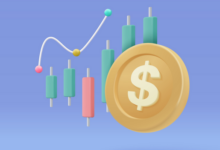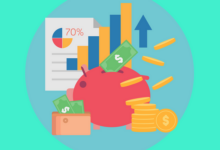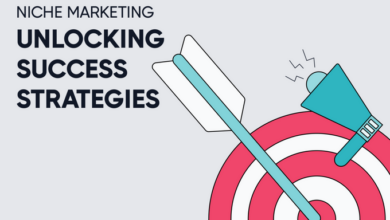Economics: Shaping Your Daily Choices
The Role of Economics in Everyday Life: How It Shapes Your Decisions—sounds dry, right? Wrong! It’s a wild ride through the economic jungle, where you’ll learn why that avocado toast is costing you a small fortune (in opportunity cost, of course!), why your rent feels like a black hole swallowing your paycheck, and how to finally master the art of the budget without sacrificing your caffeine fix. Prepare for a hilarious yet insightful journey into the often-overlooked economic forces shaping your life, one surprisingly relatable example at a time.
We’ll unravel the mysteries of supply and demand (no, it’s not just for textbooks!), explore the rollercoaster of inflation and interest rates (prepare for some thrilling ups and downs!), and equip you with the secret weapons to navigate the consumer marketplace like a seasoned pro. From savvy shopping strategies to understanding the hidden costs of everything from that new phone to your next vacation, we’ll leave no economic stone unturned (or at least, the ones that don’t cost extra to turn).
Introduction
Economics: it’s not just about stuffy suits and complicated graphs; it’s the silent soundtrack to your daily life. It’s the hum beneath the surface, influencing every decision from the coffee you choose in the morning to the career path you pursue. Understanding basic economic principles can transform you from a passive player in your own financial life into a savvy strategist.
Economics, at its core, boils down to managing scarcity. We all have limited resources – time, money, energy – and unlimited wants. This fundamental tension forces us to make choices, and these choices are governed by the principles of supply and demand, opportunity cost, and marginal analysis. Think of it as a constant, albeit often unconscious, game of resource allocation.
Scarcity and Opportunity Cost in Daily Life
Let’s unpack those core concepts. Scarcity means that there isn’t enough of everything to go around. This isn’t just about global issues; it’s about your own limited budget. Opportunity cost, closely related, is the value of the next best alternative forgone when making a choice. For instance, if you spend your Saturday afternoon watching a movie, the opportunity cost is the time you could have spent exercising, reading a book, or spending time with friends. These seemingly small choices accumulate, significantly shaping our lifestyles.
Consider Sarah, a recent college graduate. She faces a classic economic dilemma: take a high-paying job in a big city with high living costs, or accept a lower-paying position in her hometown with a lower cost of living. The high-paying job offers a higher income, but the opportunity cost is the lower quality of life and potential strain on her finances due to higher expenses. The lower-paying job provides a better work-life balance and lower stress, but the opportunity cost is a slower path to financial independence. Sarah’s choice, informed (or not) by her understanding of economics, will significantly impact her lifestyle and overall well-being for years to come. This simple example illustrates how even seemingly personal choices are deeply intertwined with economic principles.
The Role of Supply and Demand in Personal Choices
The invisible hand of the market, as Adam Smith famously called it, isn’t just a theoretical concept; it’s the force shaping your daily spending habits. Understanding supply and demand isn’t about becoming a Wall Street whiz; it’s about making smarter choices with your hard-earned cash. It’s about knowing why that avocado toast suddenly costs more, or why your favorite band’s concert tickets are selling out faster than a Beyoncé show.
Supply and demand dictates the prices of almost everything we buy. Simply put, when demand for a product is high and supply is low, prices go up. Conversely, when supply is high and demand is low, prices fall. This fundamental principle influences everything from the cost of your morning coffee to the price of that new video game console you’ve been eyeing.
Price Fluctuations of Everyday Goods
Let’s examine two common products: gasoline and bananas. Gasoline prices are notoriously volatile. Several factors contribute to these fluctuations. Geopolitical events (think international conflicts or sanctions), changes in oil production (OPEC decisions, for example), and seasonal variations in demand (more driving in summer) all play a role. A sudden disruption in the oil supply, like a major pipeline closure, can dramatically reduce supply, causing prices to spike. Conversely, a period of low global demand can lead to a surplus and lower prices at the pump.
Bananas, on the other hand, present a different picture. While factors like weather conditions in banana-producing regions (hurricanes, droughts) can significantly impact supply and subsequently price, the price of bananas tends to be more stable than gasoline. This is because bananas are a relatively readily available product with established supply chains. While a major hurricane could disrupt supply and cause a temporary price increase, the market generally adjusts more quickly than with a product as globally interconnected as oil.
Informed Purchasing Decisions Through Understanding Supply and Demand
Understanding the principles of supply and demand empowers consumers to make better purchasing decisions. By recognizing that prices fluctuate based on supply and demand, you can anticipate price changes and make strategic purchases. For example, if you know a particular item is expected to be in high demand during a holiday season (like a new gaming console launch), you might consider purchasing it earlier to avoid higher prices and potential stock shortages. Similarly, if you’re aware that a certain fruit is in abundance due to a good harvest, you can take advantage of the lower prices and stock up. Essentially, by understanding the forces of supply and demand, you become a more savvy and efficient shopper, maximizing your budget and getting the most for your money.
Budgeting and Financial Planning
Budgeting and financial planning might sound as thrilling as watching paint dry, but trust me, mastering these skills is the key to unlocking a financially fulfilling life. It’s about taking control of your money, not letting it control you. Think of it as a well-orchestrated symphony of your income and expenses, playing a harmonious tune towards your financial goals. A well-structured budget is your roadmap to financial freedom, allowing you to navigate the twists and turns of life with confidence.
Effective budgeting and financial planning involve understanding your income, tracking your expenses, setting financial goals, and creating a plan to achieve them. This includes strategies for saving, investing, and managing debt. It’s less about deprivation and more about making conscious choices that align with your values and aspirations.
Sample Monthly Budget for a Young Professional
This sample budget showcases a typical monthly financial plan for a young professional earning $5,000 a month. Remember, this is a template; your actual budget will depend on your individual income, expenses, and financial goals. The key is to adapt it to your specific circumstances.
| Income | Essential Expenses | Discretionary Expenses | Savings |
|---|---|---|---|
| $5,000 | $2,000 | $1,500 | $1,500 |
| Rent: $1,200 Utilities: $200 Groceries: $300 Transportation: $300 |
Dining Out: $500 Entertainment: $500 Clothing: $500 |
Emergency Fund: $500 Retirement Savings: $1,000 |
Strategies for Effective Financial Planning
Effective financial planning is a multifaceted approach that requires a strategic blend of saving, investing, and debt management. It’s about building a secure financial future and achieving your long-term goals, whether it’s buying a house, traveling the world, or simply enjoying a comfortable retirement.
Saving involves setting aside a portion of your income regularly. This creates a financial cushion for unexpected expenses and provides the foundation for future investments. Investing allows your money to grow over time through various instruments like stocks, bonds, or real estate. Debt management focuses on strategically paying down existing debts, minimizing interest payments, and avoiding accumulating further debt. A balanced approach to all three is crucial for long-term financial success.
“A penny saved is a penny earned.” – Benjamin Franklin
The Impact of Inflation and Interest Rates
Inflation and interest rates are like the mischievous twins of the economic world – constantly playing tricks on your money. Understanding their impact is crucial for navigating the ups and downs of everyday finances. They’re not just abstract concepts; they directly affect your purchasing power, savings, and borrowing abilities.
Inflation, simply put, is the rate at which prices for goods and services increase. Think of it as your money slowly losing its value over time. As inflation rises, each dollar buys you less than it did before. This impacts everything from your morning coffee to your monthly rent. High inflation erodes purchasing power, making it harder to maintain your standard of living. Conversely, low inflation (or even deflation) means your money retains more of its value, allowing for greater purchasing power.
Inflation’s Effect on Purchasing Power and Cost of Living
Inflation directly diminishes your purchasing power. If the inflation rate is 5%, a $100 item will cost $105 next year. This seemingly small increase compounds over time, significantly impacting your budget. The cost of living, encompassing housing, food, transportation, and healthcare, increases alongside inflation. For example, a family relying on a fixed income will struggle to keep up if inflation outpaces their income growth. They might need to cut back on expenses or find additional income sources to maintain their lifestyle. This is especially challenging for those on fixed or low incomes, who may experience a disproportionate impact.
The Effects of High and Low Interest Rates on Borrowing and Saving
Interest rates are the price of borrowing money. High interest rates make borrowing more expensive, discouraging consumers and businesses from taking out loans. This can slow down economic growth as people postpone purchases like houses or cars. Conversely, high interest rates are a boon for savers. Their savings accounts and fixed-income investments earn higher returns.
Low interest rates, on the other hand, make borrowing cheaper and more attractive. This stimulates economic activity as people are more likely to borrow and spend. However, low interest rates mean lower returns for savers, potentially leading to a decline in savings. For example, during periods of low interest rates, many individuals might shift their investment strategies towards higher-risk options like stocks to seek better returns. The 2008 financial crisis saw exceptionally low interest rates, prompting many to invest in riskier assets, ultimately contributing to the housing market bubble.
Adjusting Financial Strategies in Response to Economic Changes
Individuals can proactively adjust their financial strategies to mitigate the effects of inflation and interest rate fluctuations. For instance, during high inflation, diversifying investments into assets that tend to outperform inflation, such as real estate or inflation-protected securities, is a smart move. Also, focusing on budgeting and cutting unnecessary expenses becomes even more crucial.
During periods of high interest rates, focusing on paying down high-interest debt becomes a priority. Conversely, during low interest rates, it might be advantageous to consider taking on debt for large purchases if the interest rate is significantly lower than the expected return on investment. Regularly reviewing and adjusting your investment portfolio based on economic indicators and professional advice is essential for maintaining financial stability in the face of changing economic conditions. It’s a continuous process of adaptation, not a one-time fix.
Making Informed Consumer Choices
Navigating the modern marketplace can feel like a wild goose chase, especially with the constant barrage of shiny objects and persuasive marketing ploys. But fear not, intrepid consumer! Understanding the forces that shape your spending habits empowers you to make smarter, more satisfying choices, saving you money and headaches in the process. This section will equip you with the tools to become a savvy shopper, able to decipher marketing tactics and evaluate products effectively.
Factors influencing consumer behavior are as diverse and unpredictable as the weather. Advertising, with its seductive whispers and promises of happiness in a bottle (or a car, or a pair of shoes), plays a significant role. Peer pressure, that age-old nemesis, also exerts considerable influence, making us crave what our friends have, regardless of whether we actually need it. Our own personal values, desires, and even our moods significantly impact our buying decisions. Understanding these influences is the first step towards making conscious choices.
Advertising and Peer Pressure’s Influence on Consumer Behavior
Advertising’s power lies in its ability to create desires where none previously existed. Think of those cleverly crafted commercials that associate a product with a feeling – freedom, happiness, success. These ads don’t just sell a product; they sell a lifestyle. Similarly, peer pressure can subtly (or not-so-subtly) push us towards purchasing items we might otherwise overlook. The desire to fit in, to be part of a group, can override rational decision-making. Recognizing the influence of these external factors allows us to evaluate our needs more objectively. For example, realizing that a particular brand of sneakers is chosen primarily due to peer pressure, rather than superior quality or functionality, can lead to more mindful spending.
Strategies for Evaluating Value and Quality
Evaluating value goes beyond simply looking at the price tag. It involves considering the product’s overall quality, durability, and usefulness relative to its cost. Reading reviews from other consumers, comparing prices from different vendors, and examining product specifications are all valuable steps. Consider the warranty offered, the brand reputation, and the potential for future maintenance or repairs. For example, a cheaper washing machine might seem appealing initially, but frequent repairs could negate the initial savings in the long run. A more expensive, durable model might prove a more cost-effective investment in the long term.
Checklist for Significant Purchases
Making large purchases like a car or a house requires careful planning and thorough research. Before committing to a significant purchase, consider the following:
- Define your needs and wants: What are your essential requirements versus your desirable features? Be realistic and prioritize.
- Set a realistic budget: Determine how much you can comfortably afford to spend, considering not just the initial cost but also ongoing expenses like insurance, maintenance, or property taxes.
- Research thoroughly: Compare different options, read reviews, and seek expert opinions (e.g., a mechanic for a car, a real estate agent for a house).
- Negotiate the price: Don’t be afraid to haggle! Researching competitive pricing gives you leverage.
- Read the fine print: Carefully review contracts and warranties before signing anything.
- Seek professional advice: Consult with financial advisors, lawyers, or other relevant professionals as needed.
Following this checklist helps transform potentially overwhelming decisions into manageable steps, reducing the risk of buyer’s remorse and ensuring a more satisfying outcome.
The Economics of Employment and Career Choices
Choosing a career isn’t just about finding something you enjoy; it’s a deeply economic decision with long-term consequences for your financial well-being and overall happiness. Understanding the economic forces at play can help you make more informed choices and navigate the often-tricky waters of the job market.
Factors Influencing Salary Expectations and Job Satisfaction
Salary expectations are shaped by a complex interplay of factors. Your education level significantly impacts earning potential: a PhD typically commands a higher salary than a high school diploma. Experience plays a crucial role; years in a field translate to increased expertise and, usually, higher pay. Location matters too; a software engineer in San Francisco will likely earn more than one in rural Iowa due to differences in cost of living and market demand. Job satisfaction, however, is less easily quantified. While a high salary can contribute to satisfaction, factors like work-life balance, opportunities for growth, and the overall work environment play equally important roles. A highly-paid but soul-crushing job might ultimately lead to less satisfaction than a lower-paying but fulfilling role. The ideal scenario, of course, is a high-paying job that also provides a sense of purpose and fulfillment.
Economic Benefits of Different Career Paths
Different career paths offer vastly different economic rewards. High-demand fields like technology, medicine, and law often boast higher average salaries and better job security. However, these fields typically require significant investment in education and training. Conversely, careers requiring less formal education might offer lower starting salaries but potentially quicker entry into the workforce. Consider a comparison: a physician spends years in medical school and residency, incurring substantial debt, but ultimately earns a high income. A skilled tradesperson, such as a plumber or electrician, might require less formal education but can still earn a comfortable living through their expertise. The “best” path depends on individual skills, risk tolerance, and long-term financial goals.
Negotiating Salary and Benefits During Job Interviews
Negotiating salary and benefits is a crucial part of the job-seeking process. Before entering negotiations, thoroughly research the average salary for similar roles in your area. Websites like Glassdoor and Salary.com can provide valuable data. During the interview, clearly articulate your salary expectations based on your skills, experience, and research. Don’t be afraid to negotiate for benefits beyond salary, such as health insurance, retirement contributions, paid time off, and professional development opportunities. Remember, a successful negotiation is a win-win situation; it’s not about squeezing every last penny but about finding a compensation package that fairly reflects your value to the employer. A confident and well-prepared approach is key to securing a competitive offer. For example, having a clear understanding of your “walk-away” point – the minimum salary you’re willing to accept – will prevent you from accepting an offer that undervalues your skills and experience.
Understanding Taxes and Their Impact
Taxes: the unavoidable truth of adulting. While not exactly a thrilling topic, understanding how taxes work is crucial for navigating the financial landscape and keeping Uncle Sam happy (or at least, not enraged). This section will illuminate the various types of taxes and their influence on personal finances, helping you to make smarter financial decisions and maybe, just maybe, even find a few tax breaks along the way.
Taxes affect nearly every aspect of our financial lives, from the coffee we buy to the house we might one day own. Understanding the system allows for better planning, potentially saving you significant amounts of money over your lifetime. Ignoring taxes is like playing a game of Jenga without realizing the tower is about to collapse – it might be fun for a while, but the consequences can be… messy.
Types of Taxes and Their Implications
There’s a bewildering array of taxes, each with its own quirks and implications. The most common types impacting individuals include income tax, sales tax, property tax, and payroll tax. Income tax, levied on earned wages and investment income, is usually the biggest chunk. Sales tax, a percentage added to most purchases, varies by state and locality. Property tax, based on the value of your home or land, funds local services like schools and fire departments. Finally, payroll taxes fund Social Security and Medicare. The impact on personal finances is straightforward: higher taxes mean less disposable income. Strategic financial planning, however, can help mitigate this impact.
Tax Laws’ Influence on Financial Planning and Investment Decisions
Tax laws directly influence how we save, invest, and spend. For example, tax-advantaged retirement accounts like 401(k)s and IRAs offer significant tax benefits, encouraging long-term saving. Similarly, capital gains taxes on investment profits influence investment strategies. Investors might favor certain types of investments based on their tax implications, aiming to minimize their tax liability while maximizing returns. Understanding the tax implications of different investment vehicles is essential for building wealth effectively. Ignoring tax consequences can lead to significant losses, eroding potential gains.
Tax Deductions and Credits Available to Individuals
The tax code isn’t all doom and gloom; there are ways to reduce your tax burden. Tax deductions reduce your taxable income, while tax credits directly reduce the amount of tax you owe. Common deductions might include mortgage interest, charitable contributions, and certain business expenses. Credits, such as the child tax credit or earned income tax credit, often target specific groups of taxpayers. These deductions and credits can significantly lower your tax liability, making careful record-keeping essential. For example, meticulously tracking charitable donations can lead to a substantial deduction at tax time, effectively increasing your disposable income. It’s like finding extra money in your couch cushions – only much more satisfying (and legal).
The Influence of Government Policies on Daily Life
Governments, those benevolent (sometimes less so) giants, wield considerable influence over our daily economic lives, often in ways we barely notice. From the price of our morning coffee to the security of our retirement, government policies subtly – and sometimes not-so-subtly – shape our financial decisions and overall well-being. Let’s delve into the fascinating, and sometimes frustrating, world of government’s economic impact.
Government policies, like a well-orchestrated (or sometimes chaotic) symphony, play various instruments impacting personal economics. Minimum wage laws, social security benefits, tax policies, and regulations on various industries all contribute to the economic melody of our lives. These policies can significantly affect employment opportunities, consumer spending patterns, and ultimately, our overall financial health. Sometimes these policies work in harmony, creating a beautiful economic tune, while at other times, they clash, creating a dissonant economic cacophony.
Minimum Wage Laws and Their Effects
Minimum wage laws dictate the lowest legal hourly wage employers can pay their workers. Raising the minimum wage aims to improve the living standards of low-wage earners. However, it can also lead to businesses reducing staff, raising prices, or slowing hiring to offset increased labor costs. A potential negative consequence is that some businesses, particularly small businesses with tight margins, might struggle to absorb the increased labor costs, potentially leading to closures or reduced expansion. Conversely, a higher minimum wage could stimulate the economy by boosting consumer spending among low-income workers, as they now have more disposable income. The actual impact often depends on the size of the wage increase, the local economic conditions, and the industry in question.
Social Security and Retirement Planning
Social Security, a cornerstone of retirement planning in many countries, provides a safety net for retirees. Funded through payroll taxes, it offers a crucial source of income for many elderly individuals. However, the long-term solvency of Social Security systems is a frequent topic of debate, as the ratio of workers to retirees is shifting. Changes to eligibility requirements, benefit levels, or tax rates are often proposed to address these concerns. These policy changes directly impact the retirement plans of individuals, influencing their saving habits and expectations for their golden years. For example, a reduction in benefits might force individuals to save more aggressively for retirement, while an increase in the retirement age could lead to people working longer.
A Case Study: The Impact of Tax Credits on a Household Budget
Let’s consider the impact of a child tax credit. Imagine the Miller family, with two working parents and two young children. Before the implementation of a significant child tax credit, the Millers struggled to make ends meet. Their combined income was modest, and childcare costs were a significant burden. The introduction of the child tax credit provided them with a substantial tax refund, easing their financial strain. This extra money allowed them to pay down debt, save for their children’s education, and even afford a small family vacation. This case illustrates how targeted government policies can directly alleviate financial pressures on households, leading to improved financial stability and overall well-being. Conversely, the removal or reduction of such a credit could significantly impact their budget, forcing them to make difficult choices regarding spending and saving.
The Role of Technology in Economic Decision-Making
Technology has fundamentally reshaped how we make economic decisions, from the mundane act of buying groceries to the complex strategies of multinational corporations. The digital revolution has interwoven itself into the fabric of our economic lives, creating both unprecedented opportunities and unforeseen challenges. This section explores the impact of technology on consumer behavior, employment, and financial services.
Online shopping and digital payments have revolutionized consumer behavior, offering unparalleled convenience and choice. The rise of e-commerce platforms has broadened access to goods and services, fostering competition and driving down prices in many sectors. Simultaneously, the ease and speed of digital transactions have altered spending habits, potentially leading to both increased consumption and impulsive purchases.
The Transformation of Consumer Behavior Through E-commerce and Digital Payments
The shift from brick-and-mortar stores to online marketplaces has dramatically altered consumer behavior. Consumers can now compare prices across multiple vendors with ease, access product reviews from other buyers, and make purchases at any time of day or night. This increased transparency and convenience have empowered consumers, leading to greater price sensitivity and a demand for higher quality goods and services. The proliferation of digital payment methods, such as mobile wallets and online banking, further streamlines the purchasing process, reducing friction and encouraging more frequent transactions. For example, the success of Amazon and Alibaba demonstrates the scale and impact of this transformation, with millions of consumers worldwide relying on these platforms for their daily needs. This convenience, however, also presents challenges, including concerns about data privacy and security.
The Economic Implications of Automation and Artificial Intelligence
Automation and artificial intelligence (AI) are reshaping the employment landscape, increasing productivity in some sectors while displacing workers in others. While AI and automation can lead to increased efficiency and lower production costs, benefiting consumers through lower prices, they also raise concerns about job displacement and income inequality. Manufacturing, transportation, and customer service are just a few sectors experiencing significant automation-driven changes. The introduction of robots and AI-powered systems can lead to increased efficiency and output, but it also necessitates workforce retraining and adaptation to new roles. For instance, the self-driving car industry, while promising increased safety and efficiency, poses a potential threat to millions of jobs in the transportation sector. Governments and businesses must proactively address the challenges of workforce transition to mitigate the negative social and economic consequences of automation.
The Risks and Benefits of Online Financial Services
The rise of online banking, investment platforms, and peer-to-peer lending has democratized access to financial services, making them more convenient and affordable for many. However, these services also present significant risks, including cybersecurity threats, fraud, and the potential for financial exploitation. Online banking offers convenience and accessibility, allowing users to manage their finances from anywhere with an internet connection. Investment platforms offer access to a wider range of investment options, potentially increasing returns. Peer-to-peer lending connects borrowers and lenders directly, bypassing traditional financial institutions. However, the ease of access also presents challenges. Cybersecurity breaches can lead to identity theft and financial loss. Fraudulent schemes can target unsuspecting users, leading to significant financial harm. The lack of personal interaction in online financial services can also make it more difficult to resolve disputes or seek assistance when needed. Therefore, consumers need to be vigilant and informed about the risks involved before using online financial services.
Sustainable Consumption and Economic Responsibility
So, you’ve mastered the art of budgeting, navigated the treacherous waters of inflation, and even wrestled with the complexities of tax season. But have you considered the long-term economic implications of your spending habits? Sustainable consumption isn’t just about saving the planet (although that’s a pretty big plus); it’s about building a resilient and equitable economic future for everyone. It’s about making smart choices that benefit both your wallet and the world.
Sustainable consumption refers to using goods and services responsibly, minimizing environmental impact and ensuring fair treatment of producers. This isn’t about deprivation; it’s about mindful spending that prioritizes quality over quantity, durability over disposability, and ethical sourcing over cheap thrills. Economically, this approach fosters innovation in sustainable technologies and industries, creates new job opportunities in the green sector, and reduces the long-term costs associated with environmental damage and resource depletion. Think of it as an investment in a healthier, wealthier future—for yourself and generations to come.
Ethical Considerations in Personal Economic Decisions
Choosing ethically sourced products, such as those certified by Fair Trade, directly impacts the lives of producers in developing countries. Fair Trade ensures farmers and workers receive fair wages, safe working conditions, and a greater share of the profits. Buying Fair Trade coffee, for example, not only supports sustainable farming practices but also contributes to the economic empowerment of coffee farmers and their communities. Similarly, choosing environmentally friendly products, such as those made from recycled materials or with minimal packaging, reduces the environmental burden and supports companies committed to sustainability. This conscientious consumerism drives demand for eco-friendly alternatives, encouraging businesses to adopt more sustainable practices and fostering innovation in green technologies. The economic impact ripples outwards, creating a more equitable and environmentally responsible marketplace.
Actions to Promote Sustainable and Responsible Consumption
Making sustainable choices doesn’t require a complete lifestyle overhaul. Small changes can have a significant cumulative effect.
Choosing durable, high-quality goods over cheap, disposable items is a great start. Think of it as an investment—a quality item will last longer, saving you money in the long run and reducing waste. For example, investing in a well-made pair of shoes that lasts for years is more economical than constantly buying cheap shoes that fall apart quickly.
Reducing food waste is another crucial step. Planning meals, storing food properly, and using leftovers creatively can significantly reduce your grocery bill and minimize environmental impact. A family that reduces their food waste by 25% could save hundreds of dollars annually, while simultaneously reducing the environmental strain associated with food production and disposal.
Supporting local businesses and farmers markets helps boost your local economy and reduces the environmental impact of transportation. Buying locally sourced produce is fresher, often tastier, and supports local farmers and their sustainable practices. It also reduces the carbon footprint associated with long-distance transportation of goods.
Finally, actively researching the environmental and social impact of companies before making a purchase empowers you to make informed choices. Many companies now publish sustainability reports detailing their environmental and social responsibility initiatives. By supporting companies committed to ethical and sustainable practices, you become a powerful force for positive change in the marketplace.
Wrap-Up
So, there you have it – a whirlwind tour of how economics secretly (and sometimes not-so-secretly) runs the show in your daily life. From the seemingly mundane choices like what’s for dinner to the more significant decisions such as buying a house or changing careers, understanding the underlying economic principles empowers you to make more informed, and frankly, more fun, decisions. Now go forth and conquer your economic destiny, armed with the knowledge to outsmart inflation, master your budget, and maybe, just maybe, finally afford that slightly-less-guilt-inducing avocado toast.








